How to get Google Analytics data into Infusionsoft
Learn how to integrate Google Analytics data, such as channel and landing pages, into Infusionsoft so you know what marketing channels and campaigns are generating you leads, subscribers and customers.
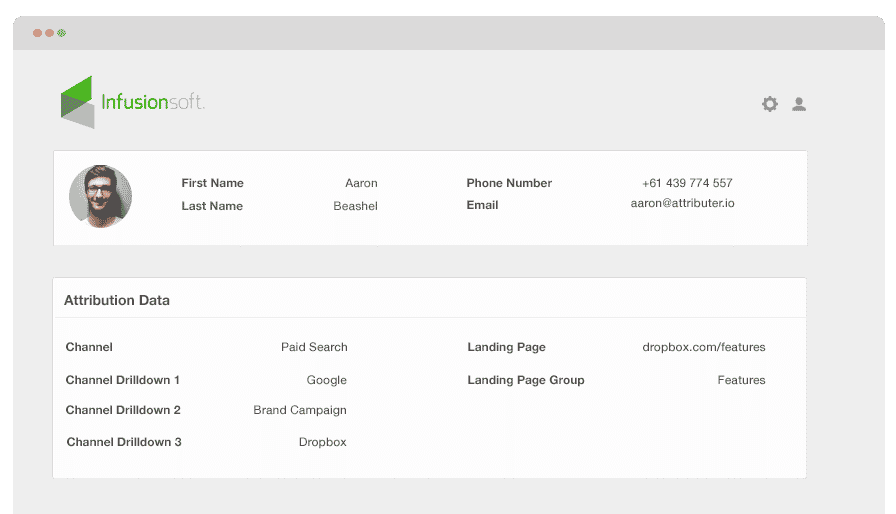
Many marketers don’t know which specific marketing channels and campaigns are bringing in the most leads and customers.
By delivering Google Analytics data (such as channel and landing page information) into your Infusionsoft CRM, you can monitor reports that tell you exactly which channels and campaigns are making you the most money, customers, and leads.
In this article, you will learn how Attributer can help integrate Google Analytics data into Infusionsoft.
What is Attributer?
Attributer helps collect technical information about visitors coming to your website. Attributer can tell you exactly how these visitors arrive at your website with this information. Attributer is a tool that you can install in your website.
Having collected the information, Attributer will categorise each visitor into different channel groups, such as paid social, paid search, organic search, etc., and store this information in the cookie of your website visitors’ browser.
Each time a visitor completes a form on your website, Attributer will use the stored cookie data to populate hidden fields you have earlier added to your website forms.
Once a visitor submits a form, information such as the UTM parameters, devices, the lead's email, name, and contact number will be passed into Infusionsoft.
4 steps for integrating Google Analytics data into Infusionsoft
Using Attributer to capture UTM parameters in Infusionsoft is easy. Here's how to do it in 4 easy steps:
1. Add hidden fields to your forms
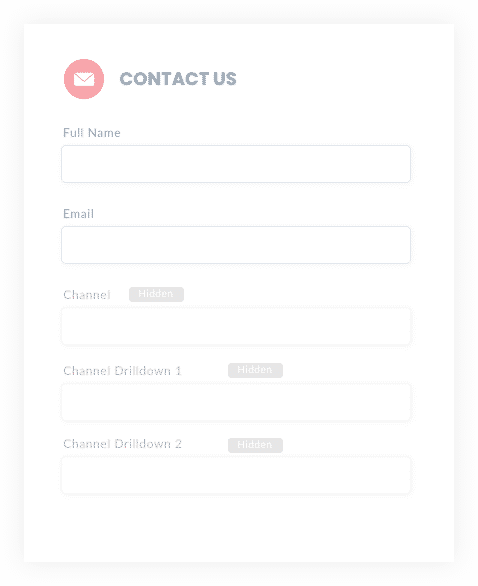
To get started integrating Google Analytics data into Infusionsoft, the first thing you need to do is add hidden fields to your lead capture forms.
Most tools for building web forms (like Gravity Forms, Typeform, Jotform, etc) have an option for adding hidden fields, so this part should be pretty easy. Alternatively, if you're utilizing a custom HTML form on your site, you can just add input type="hidden" to the form fields you want to hide.
The hidden fields you want to include are:
- Channel
- Channel Drilldown 1
- Channel Drilldown 2
- Channel Drilldown 3
- Landing Page
- Landing Page Group
2. Attributer automatically completes the hidden fields with Google Analytics data
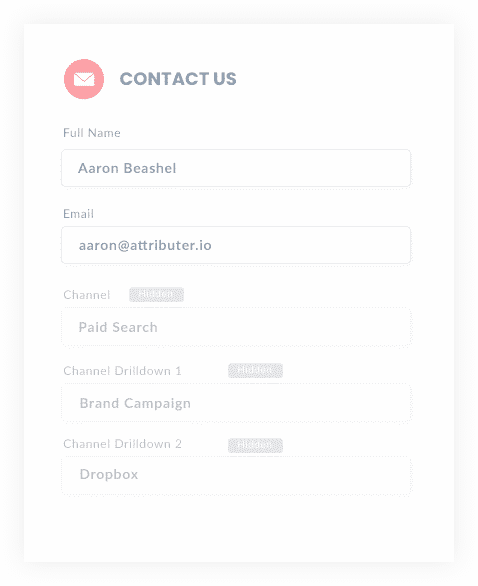
Attributer monitors where your visitors are coming from and then, when they complete a form on your website, it populates the hidden fields with Google Analytics data.
As an example, if I was a marketer at Hubspot and a visitor came to my website from one of my brand campaigns in paid search, it would populate the hidden fields as follows:
Channel = Paid search
Channel Drilldown 1 = Google
Channel Drildown 2 = Brand campaign
Channel Drilldown 3 = Hubspot
On top of the values from the UTM parameters, it would also capture the visitors first landing page (e.g: hubspot.com/features/best-crm) and the first landing page group (e.g. features)
3. Google Analytics data is passed into Infusionsoft
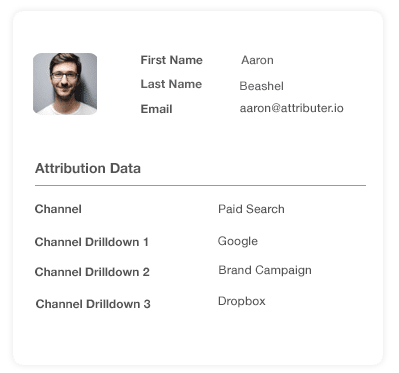
The most exciting part is that every time a visitor decides to submit the form on your website, all of the data about the channel and landing page, and the lead’s name, phone, email, etc., will be passed to your CRM.
4. Run reports to know what channels are driving leads, customers and revenue
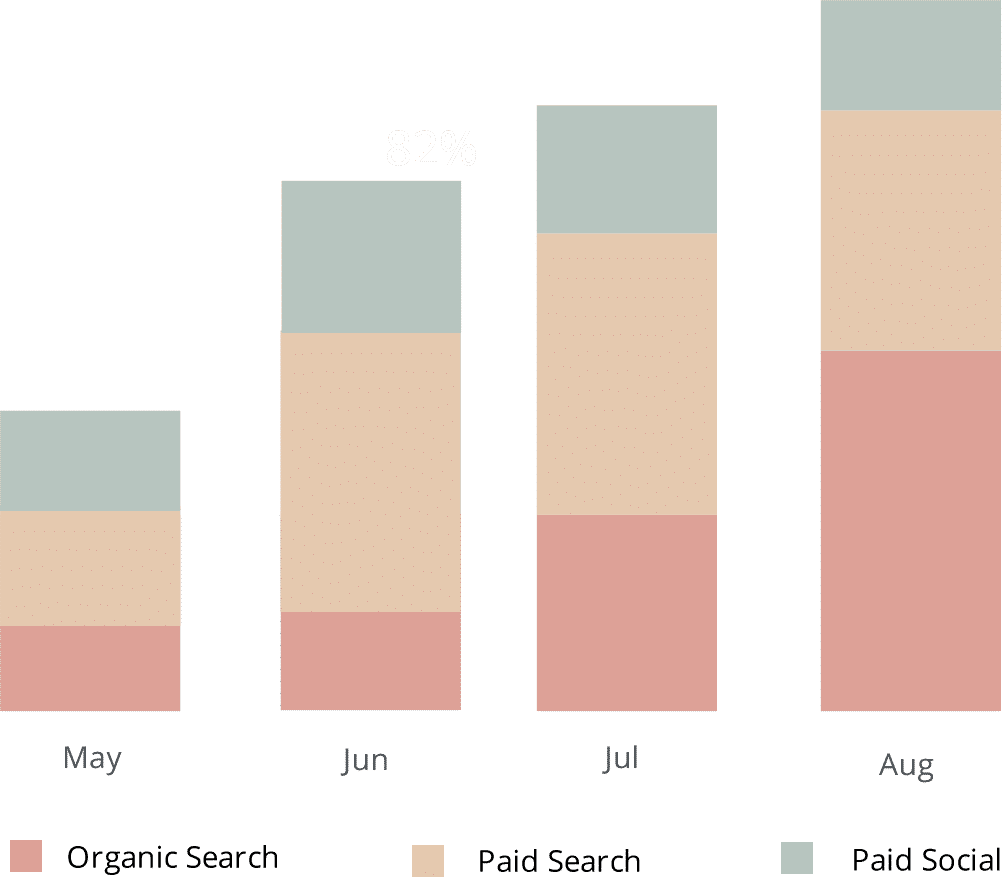
With all the channel and landing page data inside your CRM, you can now create more specialised reports. You can use the native reporting tools in your CRM to do this or one of the many BI tools that connect with Infusionsoft.
With all the reports available to you, you can determine the channels generating the most leads, have the highest conversion rates, most closed/won deals, and many more!
What data gets passed into Infusionsoft?
At Attributer, we believe that these two vital elements contribute to attribution:
- Channel - From which marketing medium did visitors arrive at your website? Usually one of paid search, organic search, paid social, referral, etc.
- Landing page - What content on your website attracted them? It could be your blog, features pages, ebooks, etc.
The main goal of Attributer is to provide the answers to these questions.
1. Marketing channel data
Attributer automatically captures the channel your visitor came from (e.g: paid search, paid social, paid ads, organic search) and provides further detail on the channel (e.g: for paid search, it also collects the keyword, campaign, ad group, etc.)
2. Landing page data
Attributer captures information on the first page the visitor sees on your site (e.g: hubspot.com/blog/best-lead-gen-content) and its category (e.g: blog).
This is an excellent feature for viewing related content as a whole. For instance, you can view the number of leads your entire blog section has generated. Also, you can understand how each blog post is performing in regards to its respective generated leads and customers.
What you can do with Google Analytics data in Infusionsoft
When the Google Analytics data is integrated into Infusionsoft, it can be beneficial in lots of ways:
1. Report on channels
With this Google Analytics data inside Infusionsoft, you can generate reports that provide you information such as:
- How many leads are coming from your Facebook ads?
- What's the lead-to-opportunity conversion rate of leads coming from your Facebook ads?
- How many opportunities have been generated from your Linkedin ads?
- How much pipeline has been generated from Google ads?
- How many closed/won deals are coming from your Facebook ads?
- How much revenue has been closed from customers that came from your Facebook ads?
- What's the total ROI of your Linkedin ads (revenue/spend generated)?
You can do this in Infusionsoft's own report builder and add the reports to a Infusionsoft dashboard for easy viewing, or you could use one of the hundreds of analytics and business intelligence tools that connect to Infusionsoft for running more advanced reports.
2. Tailor sales follow ups
Knowing what channel your leads come from, the ad they clicked, and the pages they landed on can help you create personalized follow-up messages.
For example, if you were working as a sales rep for Dropbox, and you saw that someone came to your page from a Google search about how to share large files. With this information, you will have a good idea of what they want to achieve with your product. This will help customize your follow-up strategy.
For instance, you can focus your follow ups on how efficient Dropbox is for sharing large files. Also, you can send case studies to them about other customers who primarily use Dropbox for sharing large files.
With these personalized follow-up messages, your conversion rate will improve, as you can present the customer with a solution to their needs.
3. Report on content
You can also create reports showing how your website content is performing since Attributer gathers information on every lead's landing page and landing page group.
For instance, you can run reports to show you insights including:
- How many leads did I get from my collection page?
- Which product pages have got me the most leads?
- Which product pages are converting people into customers?
- What's the ROI of my blogging efforts?
With these reports, you can also see how specific sections of your website perform. For instance, you might find out that while your blog is getting a lot of leads and visitors, just a few of them convert into customers. So you can decide whether to continue your blog or allocate your time and efforts elsewhere.
Wrap up
Attributer can be helpful for any business with all the benefits of having Google Analytics data inside Infusionsoft.
If you want Google Analytics data right inside Infusionsoft, Attributer is the solution you are looking for. The setup is simple, and once it is running, you can have detailed reports and dashboards in Infusionsoft. From here, you can monitor how your content, campaigns, advertising, and many more elements perform.
Best of all, Attributer is free to start. Start your free trial today and grow your business.
Get Started For Free
Start your 14-day free trial of Attributer today!

About the Author
Aaron Beashel is the founder of Attributer and has over 15 years of experience in marketing & analytics. He is a recognized expert in the subject and has written articles for leading websites such as Hubspot, Zapier, Search Engine Journal, Buffer, Unbounce & more. Learn more about Aaron here.
